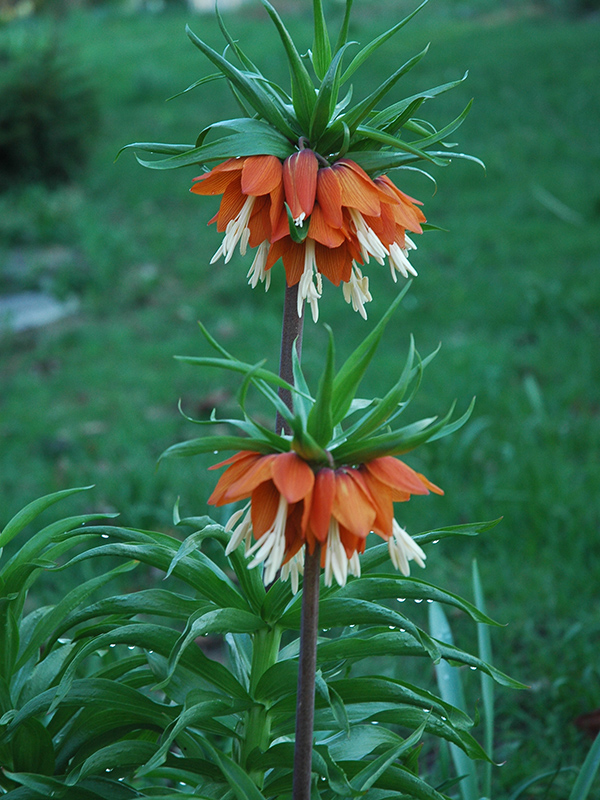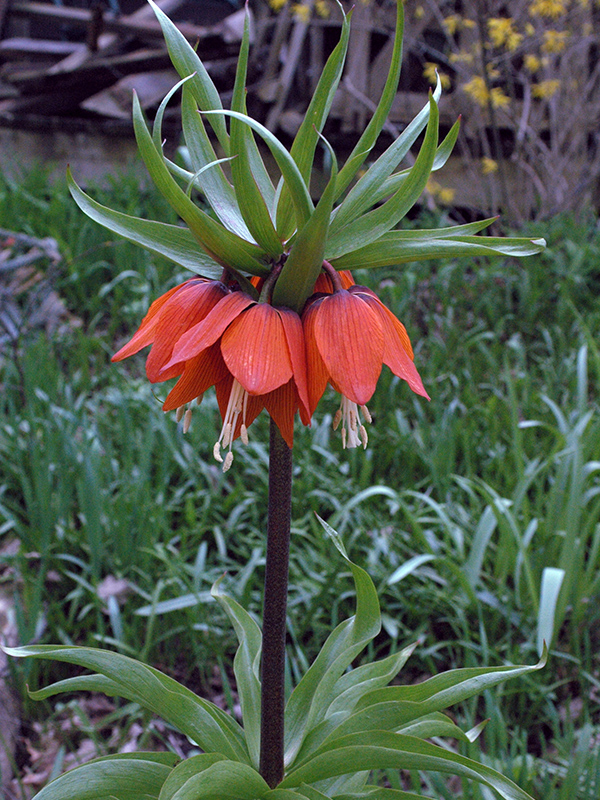| General Description | Erect robust perennial bulb with a slight 'skunk' smell. |
| ID Characteristic | Erect stems topped with sword shaped leaves and umbel of bell-shaped orange flowers beneath a crown of bracts. |
| Landscape | Informal and cottage gardens. |
| Propagation | By seed, sown in cold frame pots which need exposure to winter cold for germination. Or by offsets from the bulbs when the plants are dormant. |
| Cultivation | Due to the way that the bulb is formed, with the stem emerging from a depression, it is best to plant it on its side, to prevent water causing rot at the top of the bulb. Fritillaria imperialis requires full sun for best growth, and sandy, well-drained soil for permanence. After flowering and complete drying of the leaves, the stems should be cut off just above the ground. |
| Pests | Squirrel resistant due to the bulbs slightly 'skunky' smell. |
| Habitat | Rough terrain across the plateau of Iran to Afghanistan, Pakistan and the Himalayan foothills. Often in very dry to moist conditions and found growing in moist conditions in association with Rumex species. |
| Leaf Description | Lance shaped, glossy leaves. |


